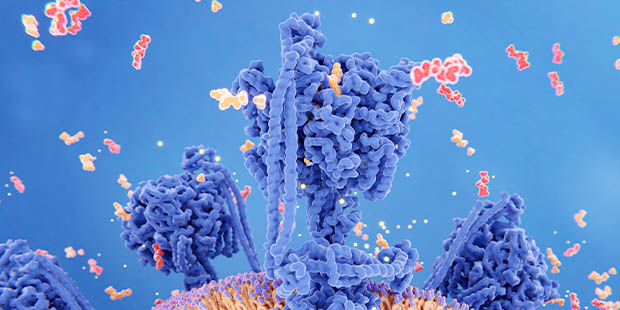Peptidomimetics: The Next Frontier in Biotechnology

Strong 8k brings an ultra-HD IPTV experience to your living room and your pocket.
Peptidomimetics are structural analogs of peptides or proteins that mimic their biological activities. They are designed to overcome limitations associated with peptides, such as poor stability and bioavailability by preserving or enhancing their functions. Peptidomimetic development involves the design and synthesis of molecules that mimic three-dimensional structures and functional groups of natural peptides. These processes can be achieved by peptidomimetic structures, modifications of peptide side chains, or incorporation of non-natural amino acid residues. Peptidomimetics can mimic the structure and function of peptides, making them a valuable tool for the study of natural processes and the development of new therapeutic strategies.
Structural Modifications
Peptidomimetics are generally structurally modified to enhance their stability, binding affinity, and selectivity to increase the stability of the target protein or receptor. Common modifications include the substitution of peptide bonds with non-peptidic linkers, the introduction of conformational constraints, and the incorporation of unnatural amino acids or side chain modifications. These modifications can help optimize the bioactivity, specificity, and pharmacological profile of peptidomimetics. The structure of peptidomimetics is carefully designed to preserve the basic structural features of the peptides while improving their pharmacological properties.
Functions of Peptidomimetics
Peptidomimetics have a wide range of functions and are being increasingly explored in drug discovery and development because of their potential therapeutic benefits. Some of the main functions of peptidomimetics include inhibiting or modulating enzymes & proteins, targeting specific receptors, and enhancing drug stability & bioavailability.
Specifically, peptidomimetics can bind to enzymes and block their activity, making them useful in the development of cancer treatment. In addition, peptidomimetics can disrupt or potentiate interactions between proteins, which may be useful in the treatment of related diseases. In terms of targeted drug delivery, peptidomimetics can achieve target specific cells or tissues in the body. When peptidomimetics are conjugated with targeted antibodies or ligands, they can deliver drugs by selectively getting into diseased cells while reducing off-target effects. Peptidomimetics can also stabilize secondary structures, such as alpha-helices or beta-sheets, which are critical for the function of proteins and increase the stability and potency of therapeutic peptides.
Peptidomimetics Research
Peptidomimetics have been successfully developed for a wide range of therapeutic applications, including cancer, infectious diseases, and metabolism disorders. They have shown promise in improving drug efficacy, selectivity, and pharmacokinetic properties compared to natural peptides. Among the various aspects of peptidomimetic studies, peptidomimetic drug screening is a powerful method to address many needs. In addition to these types mentioned above, it is also frequently used for neurological diseases, immunology, and inflammation.
Peptidomimetics have a wide range of functions and are being increasingly explored in drug discovery and development because of their potential therapeutic benefits. Some of the main functions of peptidomimetics include inhibiting or modulating enzymes & proteins, targeting specific receptors, and enhancing drug stability & bioavailability.
Specifically, peptidomimetics can bind to enzymes and block their activity, making them useful in the development of cancer treatment. In addition, peptidomimetics can disrupt or potentiate interactions between proteins, which may be useful in the treatment of related diseases. In terms of targeted drug delivery, peptidomimetics can achieve target specific cells or tissues in the body. When peptidomimetics are conjugated with targeted antibodies or ligands, they can deliver drugs by selectively getting into diseased cells while reducing off-target effects. Peptidomimetics can also stabilize secondary structures, such as alpha-helices or beta-sheets, which are critical for the function of proteins and increase the stability and potency of therapeutic peptides.
Peptidomimetics are generally structurally modified to enhance their stability, binding affinity, and selectivity to increase the stability of the target protein or receptor. Common modifications include the substitution of peptide bonds with non-peptidic linkers, the introduction of conformational constraints, and the incorporation of unnatural amino acids or side chain modifications. These modifications can help optimize the bioactivity, specificity, and pharmacological profile of peptidomimetics. The structure of peptidomimetics is carefully designed to preserve the basic structural features of the peptides while improving their pharmacological properties. In conclusion, peptidomimetics continues to evolve and grow, with ongoing research efforts aimed at the development of new peptidomimetics with improved biological activity and therapeutic potential. Others about: breast cancer genetic testing services
Note: IndiBlogHub features both user-submitted and editorial content. We do not verify third-party contributions. Read our Disclaimer and Privacy Policyfor details.







